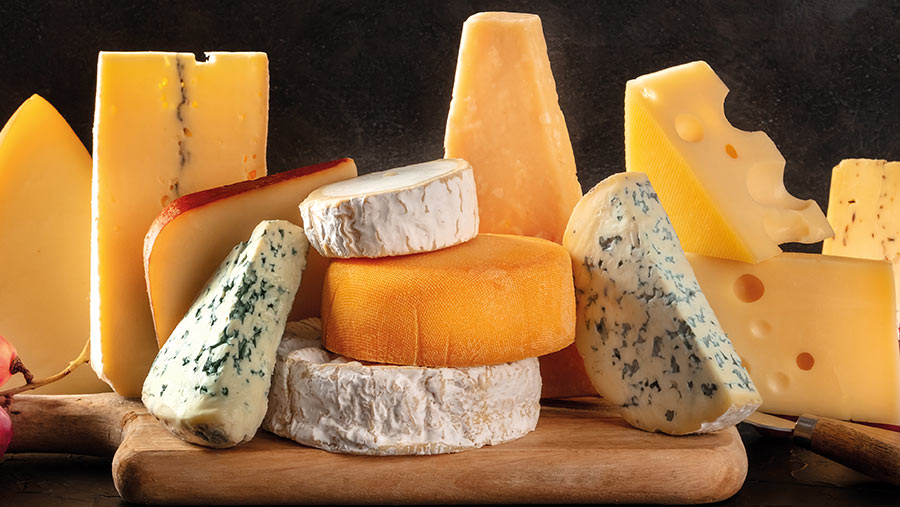Will’s World: The great revival in farmhouse cheesemaking
 © AdobeStock/Illya
© AdobeStock/Illya I often wonder what lies beyond. You know, the next life and all that.
What really happens when we finally shuffle off this mortal coil? I like to imagine that it’ll be peaceful, and there’ll be powerful feelings of calm and contentment.
Like returning home to the loving arms of your family after a very long and arduous journey.
In films and books, they tend to suggest that you wake up in your own private paradise, and if that’s really the case then I’d like mine to be a kind of heavenly cheesemonger’s shop.
See also: Analysis: State of milk market 20 years after deregulation
I’d awake to a kindly faced man, dressed in a white hat and apron. Perhaps he’s St Peter. We’d discuss in depth the thousands of cheeses on offer, which stretch in front of me as far the eye can see.
Great stacks of Stiltons, reams of red Leicesters, mountains of mature cheddars… and then we’d taste them together as the conversation moves on gently to my various sins.
We’d laugh off the behaviour on that lad’s holiday to Magaluf in 1997, and even the various words I used after my last Red Tractor inspection would be forgiven. A clean slate. Yes, I can stay, and I’m happy in cheese heaven.
Taste test
But hopefully that’s many years away yet, so for now I’ll have to manage with the next best thing.
I was given a virtual cheese-tasting session for Christmas, and last Saturday night the present Mrs Evans and I sat down with six different British farmhouse cheeses that had arrived the previous day from The Courtyard Dairy in North Yorkshire.
I cannot adequately describe our excitement as, armed with some crusty bread, artisan crackers and a few bottles of nice wine we joined the Zoom call along with 50 other similarly spirited cheese fans of all ages to begin our journey.
The cheesemonger in chief, Andy Swinscoe, started off by giving us an introduction to the history of farmhouse cheesemaking in the UK, and how it declined through the 20th century.
At the start of the First World War there were over 3,500 cheesemakers in the country, but by the end of the Second World War, there were barely 100 still producing.
The introduction of the Milk Marketing Board in 1933 only hastened the demise, as suddenly the Government offered a good price for liquid milk and what’s more, would collect it from the farm gate.
There was no real need or incentive for farmers to produce their own cheese anymore. Clumsy and ill-thought-out policy having a knock-on effect? Imagine that.
A grate idea
By now we had sampled the delights of Sinodun Hill goat, Old Roan, and Yorkshire Pecorino, and the white wine was gone.
Andy was beginning to describe the great revival in farmhouse cheesemaking that the UK’s seen in recent decades and talking with great enthusiasm about the farming families producing them.
From first generation farmers who’d given up their city jobs to milk goats, to immigrants into Britain who’d brought wonderful diversity of skills and thought with them, and multi-generational businesses keeping long-standing tradition alive, it was a joy to hear about them all, as well as see the unbridled support for the farmers from our fellow tasters on the call.
We were well into the Winslade, Summer Field, and Cote Hill Blue (which was truly heavenly), when Andy began to wrap things up.
The average French person, he said, consumes twice as much cheese in a year as the average Brit. I’ll be doing my best to alter that statistic this year. Blessed are the cheesemakers indeed.

